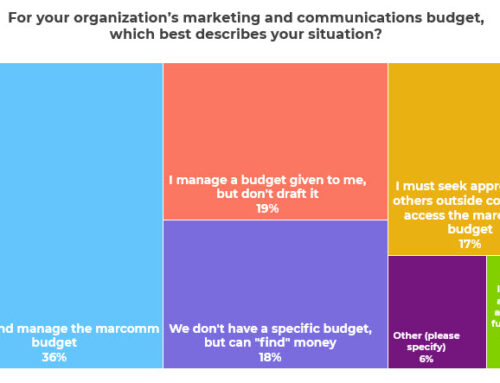
Peter Panepento
Last month, Peter Panepento challenged nonprofits to Stop Approaching PR Like It’s 2007. This month’s he’s back to share more about how you can best reach your audience and cultivate relationships with the media. ~Kivi
Guest Post by Peter Panepento of Panepento Strategies
You probably wouldn’t expect Bob Dylan to draw inspiration from Frank Sinatra.
One was a hero of the 1960s counterculture. The other was an icon of the old American establishment.
But when Dylan released his recent new album — which covers a number of old Sinatra songs — he spoke freely about his admiration for the Chairman of the Board.
“Frank sang to you, not at you,” Dylan told AARP The Magazine. “I never wanted to be a singer that sings at somebody.”
For nonprofit public relations pros, Dylan’s statement carries a lot of meaning.
Gone are the days when we could communicate at our potential audiences. We can no longer rely solely on news releases, stories about donations and annual galas, or announcements about our work.
Today’s nonprofit communications teams should instead be thinking about how they can be speaking to the people they most want to reach — whether those people are reporters, potential donors, or activists.
Last month on this blog, I challenged nonprofit communicators to stop approaching media relations like they did in 2007. Today, I’d like to share some suggestions on how your organization can approach its media relations in a more engaging way.
And if Dylan had decided to become a nonprofit communicator rather than a musician, he would probably be taking this approach:
Determine who you most want to reach — Many organizations approach their public relations and communications with the idea that they need to reach everyone with the same message. As a result, they aren’t really speaking directly to anyone. To refine your approach, spend some time understanding your nonprofit’s larger goals — whether it’s to reach more wealthy donors, motivate people to take action on an important policy, or to drive more young people to raise money on your behalf.
Develop personas for those people — and determine where are the best channels to reach them. It might turn out that you shouldn’t be as interested in getting that announcement picked up on Page 4 of the local section of the daily newspaper in your city as you originally thought. You might actually be better served having your story told by a blogger who writes about your cause or your video shared on YouTube.
Establish your expertise — One way to get the attention of reporters is to become a go-to source when they are covering a particular issue. If you work at a health-care nonprofit, for example, having your executive director quoted in a story about a health trend is likely to give you more mileage than a mention about your annual gala. And here’s a secret about reporters — if you’ve been a good source for them in the past, they’re likely to put you at the top of their list of calls the next time they’re covering a topic.
Build relationships — Rather than blanketing reporters and editors with press releases and announcements, find some time to just talk to them — whether through an occasional call or over coffee. It gives you a chance to talk more directly about the work you’re doing and give them ideas about how you can help them in their day-to-day reporting. And when you meet with the reporter — don’t just talk about your work. Ask questions and listen. You might learn something valuable about what they value and the types of stories that excite them. That information is valuable when you’re pitching your next story idea.
Show the ‘how’, not just the ‘what’ — Have you ever watched the TV show “How It’s Made?” It takes people behind the scenes to learn how recognizable products are actually produced. A show about a hand mixer isn’t that interesting. But a show about how they built the hand mixer — now that’s good television. If you’re looking to get exposure for your organization, consider inviting reporters to learn about how you do the work you do. Offer to take them behind the scenes so they can learn an interesting part of your process. Depending on your cause, it could lead to a great stand-alone story. At the very least, the reporter will remember you the next time she is writing about something that relates to your mission.
Show your impact —In last month’s post, I suggested that nonprofits should move away from sending out the “big-check photo” when announcing a major gift or the completion of a fundraising campaign. What’s the alternative? How about telling the story of one of the people who will be helped by that donation? It makes your announcement a human-interest story about someone who is being helped. Not only is this a more colorful story, it resonates well with potential donors who want to know that their contributions are making a difference.
Give your supporters the microphone – Your PR department no longer has to be the only mouthpiece for your organization. Your supporters — through their blogs, Facebook pages, Twitter feeds and YouTube channels — are also valuable in reaching new people with your message. While it’s valuable to get your story told in the mainstream media, many fast-growing charities are eschewing the media and empowering their supporters to be their storytellers. In our next post, I’ll share some examples of groups that do this well — and how you can do the same.
Peter Panepento is principal at Panepento Strategies, a full-service content, digital, and social strategy firm for nonprofits and socially-minded companies. He was formerly an assistant managing editor at the The Chronicle of Philanthropy, where he led its transition into digital journalism and social media — a transition that included the creation of some of the nonprofit world’s richest online communities, the launch of a highly profitable webinar series, and the creation of new digital products such as the How America Gives giving database.






